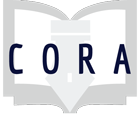Students will participate in a game-based learning scenario based on Net Neutrality. Participants will each assume the role of an individual vested in the issue (Chairman of the FCC, President of the U.S., CEO of telecommunications company, or Supreme Court Justice). They will form alliances, discuss issues, formulate a strategy, and briefly share their viewpoint with the hope of winning the game. The learning experience is student lead.
Assignments
Created by M. Brown-Salazar Saint Mary's College of CA This lesson was developed to have graduate level students explore social justice issues in information found on the internet. It is based on Dr. Safiya Noble's work: Algorithms of Oppression. Simplified, we asked students to consider that when we seek information, we need to examine the perspective/privilege of the voices/sources of information and identify/understand whose voices are represented and whose voices are missing and how that impacts/influences our understanding.
Created by M. Brown-Salazar & G. Kessler Lee Saint Mary's College of Ca Library This lesson was developed to have students explore social justice issues in information found on the internet. It is based on Dr. Safiya Noble's work: Algorithms of Oppression. Simplified, we asked students to consider that when we seek information, we need to examine the perspective/privilege of the voices/sources of information and identify/understand whose voices are represented and whose voices are missing and how that impacts/influences our understanding. We used clips from a lecture by Dr.
A two-credit online graduate information literacy course.
This group activity can be used in a variety of disciplines and contexts. Pass the Problem aims to have students provide feedback to other students on database and keyword selection. By having students critique each other it works to build critical self-reflection during the research process (it's also pretty fun!).
This assignment was created for an introductory nutrition course for health related science majors and nonmajors to meet the Information Literacy Flag criteria for the core standards at Loyola Marymount University. The assignment focuses on the evaluation of a primary and secondary source on a specific topic to assess the similarities and differences between the sources of information. The primary goal of the assignment is for a pair of students to select a current popular press article that references a recent scientific journal article.
Students create an entry in the Fremont Wiki - http://localwiki.net/fremont. Students incorporate information literacy concepts, have hands-on experience conducting research, and create actual content on the Internet [while also learning how easy it is for anyone to change that content]. It could also be a great chance to get students into local museums and archives.
Syllabus and five assignments within a two-credit live course at undergraduate level. See "Relevant Links" section for access to all assignments. Assignments include a rubric.
This activity proceeds via Socratic questioning. The goal is to have students explain the common stumbling blocks they encounter as they look for information and as they write papers (if they have). The role of the librarian is to facilitate the discussion by providing a contextual framework for student experiences. By showing students that their research process follows a common pattern, they can make better choices about how, when, and where to look for information (e.g., not jumping straight to peer-reviewed articles when they can barely define their topic)
This assignment was designed to incorporate information literacy concepts into an in depth writing assignment. By only focusing on a total of one outside source at a time, students are required to do deep research to find the one source that they can engage with on the level required for a good essay. Requiring a small number of sources also allows the students to practice incorporating outside material into their own writing and thinking and allows the instructor to see progress in this area.
Exercise One:
